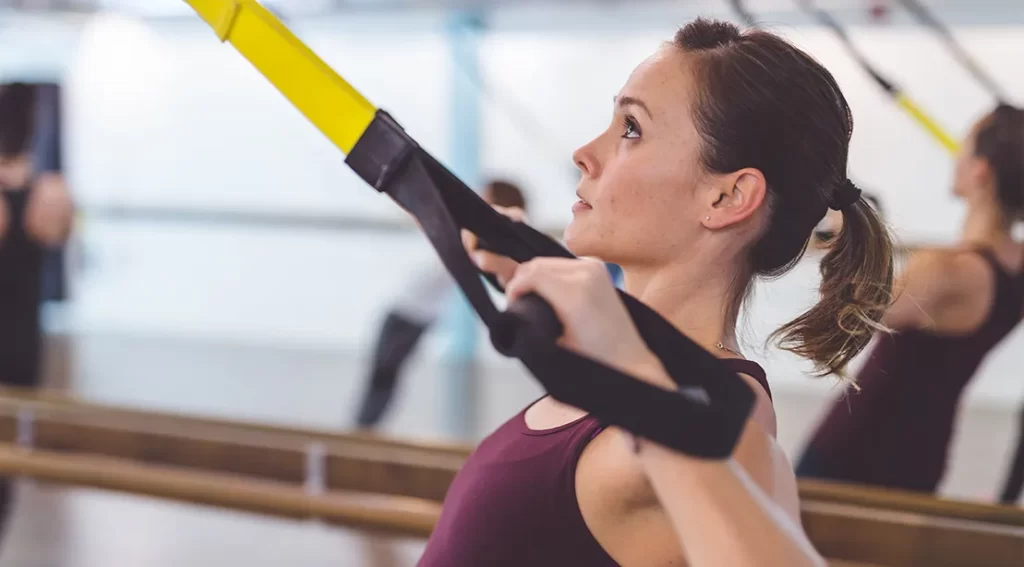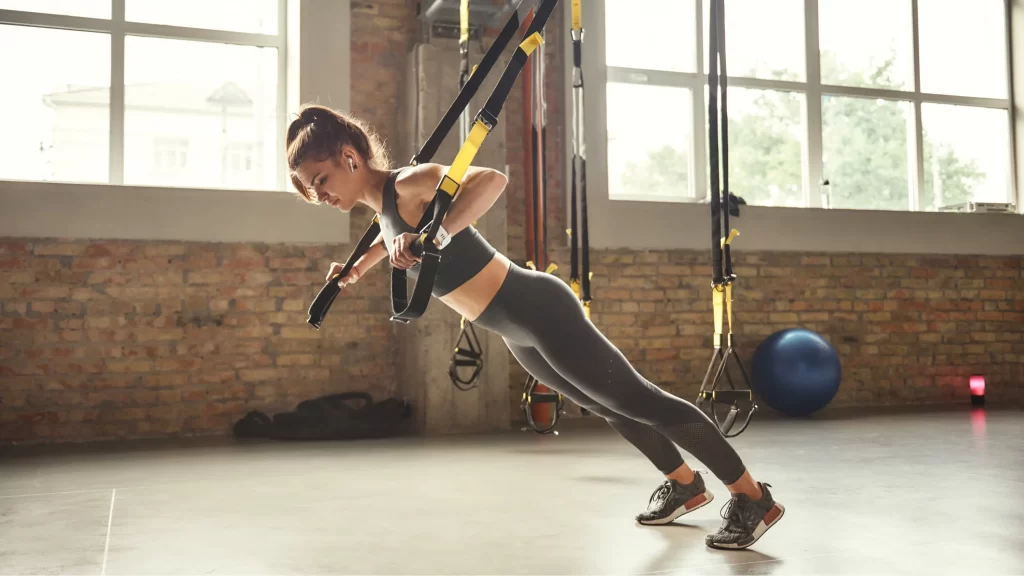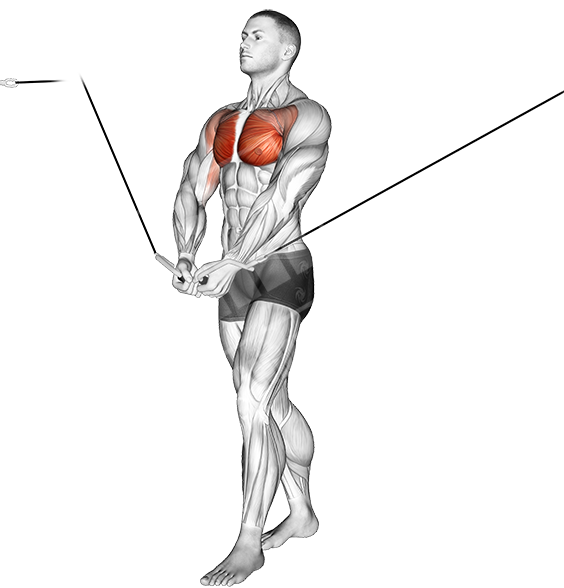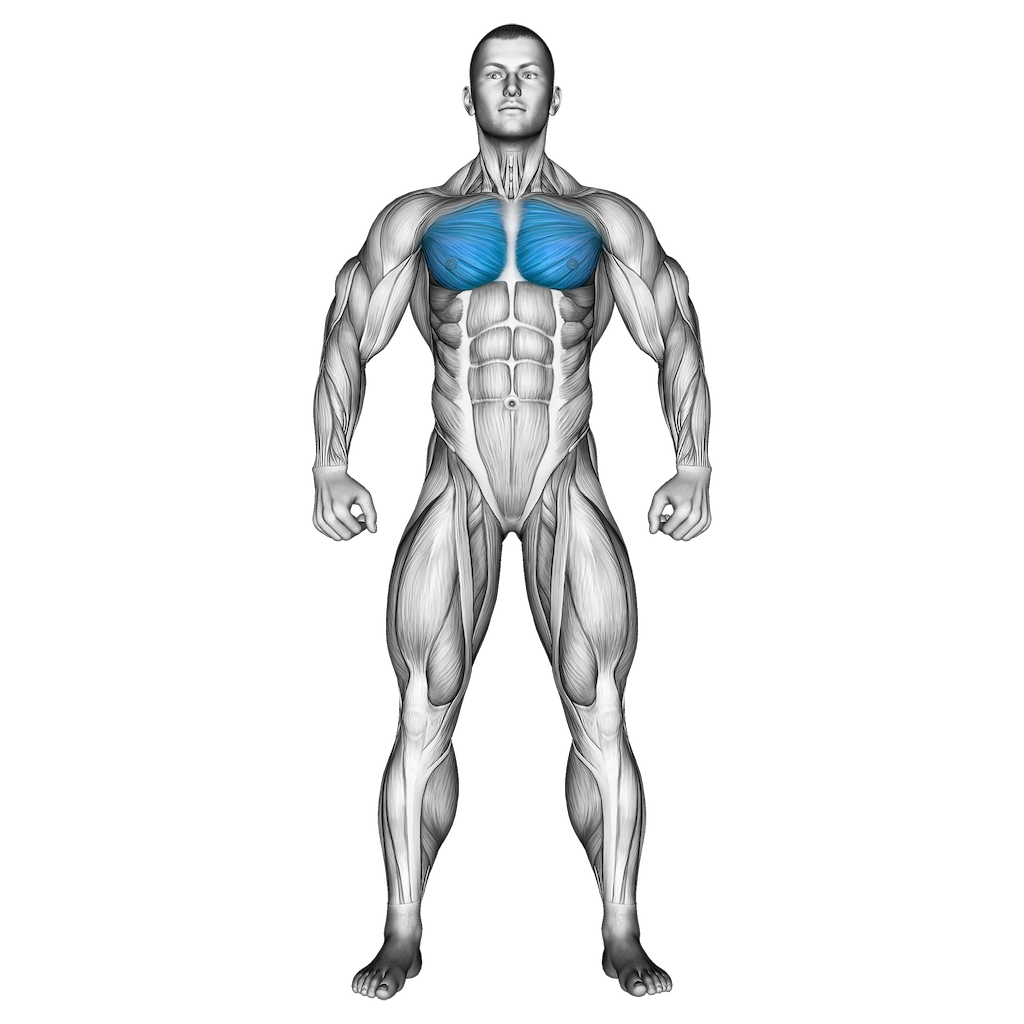
Are you looking for a way to get fit and stay in shape? TRX Bands are an ideal solution, providing an effective total-body workout that can be adapted to any fitness level. With the resistance of the bands helping to build strength and stability, along with dynamic movements targeting specific muscle groups, it is easy to see why they have become so popular in recent years.
Plus, being relatively lightweight and durable makes them perfect for home or outdoors — giving you ultimate freedom when choosing your workout location! Dive into this blog post as we explore all there is to know about these powerful training devices.
What are TRX bands?
TRX bands, also known as suspension trainers, are elastic ropes or trx straps with handles attached that you can use for strength training. You anchor the bands to a door frame or other secure structure and then use your body weight and gravity to create resistance as you move through different exercises. This creates an effective total-body workout that can be adapted to any fitness level.
Why are TRX bands beneficial for exercise?
TRX bands are incredibly beneficial for exercise due to their versatility and adaptability. They allow you to work out every muscle group, from the larger ones, like your back and legs, to the smaller, often overlooked ones, such as those in your arms and core. The adjustable nature of TRX bands makes them ideal for beginners and advanced fitness enthusiasts.
They are effective for strength training and improving flexibility, balance, and core stability. Furthermore, working out with TRX bands involves compound movements, which means using multiple joints and muscles simultaneously. This promotes functional strength and can aid in injury prevention. Another significant advantage is their portability. TRX bands are light and compact, making them easy to carry for workouts, whether traveling in the park or at home gym.
How to use TRX bands safely for an effective workout?
Using TRX bands for a safe and effective workout starts with setting up the bands correctly. The bands should be securely anchored to sturdy support, such as a door anchor frame, a tree, or a designated suspension trainer anchor. The height of the anchor point can be adjusted to suit the specific exercise and your fitness level. Ensure that the band is at waist height for most exercises.
Following proper form is crucial: maintain a straight back, engage your core muscles, and avoid jerky or uncontrolled movements. Start with a low-resistance setting, then gradually increase the intensity as your strength improves. Always warm up before beginning your workout and cool down afterward.
Remember to listen to your body and take breaks as needed. Periodic inspection of the bands for any signs of wear or tear is also important for safety. By following these strategies; you can make the most out of your TRX band workouts while minimizing the risk of injury.
The best TRX exercises are:
TRX bands offer a variety of exercises that can help create an effective total-body workout. Here are some of the best TRX exercises you can do to target specific muscle groups and achieve your fitness goals:
TRX Exercises: Pushup

The TRX Pushup is an excellent exercise for improving upper body strength, specifically targeting the chest muscles, triceps, shoulders, and core. To perform this exercise, face away from the anchor point and hold the handles at chest height with your arms extended. Walk your feet forward to create an inclination. The steeper the angle, the more challenging the exercise.
Lower your body by bending your elbows until your chest is above the bands. Then, push your body back up to the starting position, maintaining a tight core and straight back throughout. You can adjust the resistance by modifying your body angle. The TRX Pushup enhances traditional pushups by introducing instability, which forces your muscles to work harder to maintain balance, promoting increased strength and muscle tone.
TRX Exercises: Squat

The TRX Squat is an excellent compound exercise for improving leg and core strength. To perform this exercise, stand facing the anchor point with your feet shoulder-width apart, holding both handles at chest level. Step back to create resistance, keeping your arms straight before you.
Squat down until your thighs parallel the ground, ensuring your knees don’t go over your toes and your back remains straight. Drive through your heels to return to a standing position. To increase resistance, move further away from the anchor point. The TRX Squat is an effective exercise for strengthening and toning the glutes, quads, hamstrings, and core muscles.
TRX Exercises: Row

The TRX Row is a powerful exercise for building upper body strength, particularly targeting the back muscles, biceps, and core. To execute this exercise, face towards the anchor point and hold the handles with your arms fully extended.
Lean back until your body is at a slight angle, with your weight on your heels and your body straight from head to heel. Pull your body upwards by drawing your elbows toward your ribs and squeezing your shoulder blades together. Slowly extend your arms and return to the starting position while maintaining body alignment.
The difficulty of the TRX Row can be adjusted by changing your body angle. The sharper the angle, the more challenging the exercise. This exercise enhances the traditional row by incorporating instability, requiring your muscles to work harder to maintain balance, increasing strength and muscle tone.
TRX Exercises: Pullup

The TRX Pullup is a powerful and challenging exercise that primarily targets the upper body’s muscles, including the latissimus dorsi (back muscles), biceps, and forearms, while also engaging the core muscles. This exercise significantly improves upper body strength and endurance, promotes better posture, and enhances overall functional fitness.
To perform the TRX Pullup, adjust the TRX bands to a long length and securely anchor them. Stand facing the anchor point, grasp the TRX handles, and walk your feet under the anchor point until your body is at a backward-leaning angle, arms fully extended above your head. Your body must remain straight from head to heels throughout the exercise.
Then, using the strength of your back and arms, pull your chest up towards the handles while keeping your body straight, as if trying to pull yourself up to the ceiling. A common mistake is to use a “wriggling” motion to pull yourself up, which should be avoided to ensure the right muscles are doing the work.
TRX Exercises: Pistol

The TRX Pistol Squat is a challenging yet rewarding exercise primarily targeting the quadriceps, hamstrings, glutes, and core muscles. It’s an advanced single-leg exercise that also helps enhance balance, coordination, and unilateral strength.
To perform the TRX Pistol Squat, adjust the TRX bands to a mid-length height. Stand facing the anchor point with your feet hip-width apart, and hold both handles in front of your chest. Lift one foot off the ground, extending it in front of you. Squat down on your standing leg, pushing your hips back, and bending your knee until it forms a 90-degree angle. Ensure your knee does not go past your toes and your back remains straight throughout the movement. Push through the heel of your standing foot to return to the starting position. Repeat the movement on the other leg.
The TRX Pistol Squat is a highly intensive exercise, and it’s important to maintain proper form throughout to avoid injury. You can modify the exercise by not squatting as low should it be too difficult. As your strength and balance improve, you can increase the difficulty by squatting lower or adding a jump at the movement’s top. Remember to engage your core and keep your chest lifted throughout this exercise. The TRX Pistol Squat is a fantastic addition to any TRX-based workout program, offering a new level of challenge and effectiveness.
TRX Exercises: RFSS

The TRX RFSS, or Reverse Foot Suspended Squat, is an intense lower-body exercise that primarily targets the quadriceps, hamstrings, glutes, and core muscles while challenging your balance and coordination. This TRX exercise introduces a unique twist on the traditional squat by introducing an element of instability, promoting increased muscle engagement and strength.
To perform the TRX RFSS, start by adjusting the TRX bands to a mid-length position. Stand away from the anchor point, place one foot in both TRX handles, and position your body into a single-leg squat stance. The suspended foot should be extended backward, with the knee slightly bent. Maintain a straight back and tight core, then lower your body by bending your standing leg until your thigh is nearly parallel to the ground.
The TRX RFSS can improve unilateral strength, promoting better balance and overall functional fitness. It’s important to perform this exercise properly to maximize its benefits and prevent injury. Start with a shallow squat, then gradually increase the depth as your strength and balance improve. The TRX RFSS can be a powerful addition to your TRX workout routine, providing a unique challenge to traditional squat exercises and enhancing your lower body and core strength.
TRX Exercises: Hamstring Curl

The TRX Hamstring Curl is an effective lower-body exercise that primarily focuses on the hamstring muscles but also works the glutes and core. This exercise improves hamstring strength, promotes better balance, and enhances overall lower-body functionality.
To perform the TRX Hamstring Curl, adjust the TRX bands to a short length and secure them at a low anchor point. Lie on your back with your feet towards the anchor point, and place your heels in the TRX handles. Keep your legs fully extended, tighten your core, and raise your hips off the floor, maintaining a straight line from your shoulders to your heels.
Initiate the exercise by bending your knees and pulling your heels towards your glutes, keeping your hips raised throughout the movement. Your body should remain straight from your knees to your shoulders. Extend your legs to return to the starting position in a slow and controlled manner.
TRX Exercises: Triceps Extension

The TRX Triceps Extension is a powerful, upper-body exercise that primarily targets the triceps muscles but also works the shoulders, chest, and core. The triceps comprise two-thirds of your upper arm and are responsible for extension. Therefore, training these muscles is crucial for maintaining upper body strength, improving functional fitness, and enhancing athletic performance.
To perform the TRX Triceps Extension, adjust the TRX bands to a mid-length position and secure them at a high anchor point. Stand away from the anchor point, grasp the TRX handles with an overhand grip, and position your feet shoulder-width apart. Lean forward so your body is diagonal, with your hands at your forehead and your elbows bent at a 90-degree angle.
Initiate the exercise by extending your arms and pushing the handles downwards until your body forms a straight line from head to heels. Maintain tightness in the core and ensure your body remains straight throughout the movement. Return to the starting position in a slow, controlled manner, using the strength of your triceps to pull you back up.
TRX Exercises: TRX Biceps Curl

The TRX Biceps Curl is an effective exercise primarily targeting the muscles. The biceps are crucial for upper body strength and functionality, playing a key role in tasks like lifting and pulling. The TRX Biceps Curl utilizes the principles of suspension training to engage these muscles in a unique and challenging way.
To perform the TRX Biceps Curl, adjust the TRX bands to a mid-length position and secure them at a high anchor point. Stand facing the anchor point. Hold the handles with an underhand grip, arms fully extended, and lean back until your body is at a diagonal. This is your starting position.
Initiate the movement by bending your elbows and pulling towards the anchor point. Your body should remain straight, and your elbows should be the only joints moving. Try to get your hands as close to your forehead as possible without allowing your elbows to flare to the sides. Lower yourself back to the starting position in a slow, controlled manner, maintaining constant tension on the TRX bands.
TRX Exercises: TRX L-Sit

The TRX L-Sit is a challenging and effective exercise for targeting the core muscles, primarily the rectus abdominis, also known as the “six-pack muscles.” This exercise utilizes the principles of suspension training, providing a unique and engaging way to strengthen and tone the core.
To perform the TRX L-Sit, adjust the TRX strength bands to a mid-length position and secure them at a high anchor point. Stand facing the anchor point and place your feet in the TRX handles. Position yourself in a high plank position with your hands directly underneath your shoulders. This is your starting position.
The exercise is initiated by pulling your knees towards your chest while keeping the rest of your body stationary. Engage your core muscles and lift your hips off the floor, bringing your legs parallel. Your body should form an “L” shape. Hold this position for a few seconds before slowly returning to the starting position.
The TRX L-Sit is a versatile exercise that can be adapted to suit different fitness levels. Beginners can perform the exercise with their knees bent, while more advanced users can increase the difficulty by performing the exercise with straight legs. The TRX L-Sit is an excellent addition to any TRX-based workout program, offering a challenging core workout that can improve strength, stability, and balance. Maintaining proper form throughout the exercise is crucial to prevent injury and maximize effectiveness.
TRX Exercises: Knee Tuck

The TRX Knee Tuck is a dynamic exercise that primarily targets the core muscles, including the rectus abdominis and obliques. Utilizing the TRX bands, this exercise strengthens and tones the abdominal muscles and enhances overall body stability, balance, and coordination.
To perform the TRX Knee Tuck, adjust the TRX resistance bands to a mid-length position and secure them at a high anchor point. Stand facing away from the anchor point, place your feet in the TRX handles, and position yourself in a high plank position with your hands directly underneath your shoulders. This is your starting position.
The exercise is initiated by drawing your knees towards your chest while keeping your upper body stationary. Engage your abdominal muscles as you tuck, physical therapy and aim to bring your knees as close to your chest as possible. After a brief pause, extend your legs back to the starting position in a slow, controlled manner.
The TRX Knee Tuck is a versatile exercise that can be adapted to suit different fitness levels. Beginners can perform the exercise with a smaller range of motion, while more advanced users can increase the difficulty by quickening the pace or adding a push-up between reps. It’s an excellent addition to any TRX-based workout program, providing a comprehensive core workout that can boost strength, improve posture, and enhance athletic performance. Maintaining proper form throughout the exercise is crucial to prevent injury and maximize effectiveness.
FAQs
What muscles do TRX exercises target?
TRX exercises typically target the core muscles, such as the rectus abdominis and obliques, but can also target other muscle groups depending on the exercise. Commonly targeted muscle groups include the biceps, triceps, shoulders, back, chest, and glutes.
Can I use TRX exercises for weight loss?
TRX exercises are effective for weight loss due to their versatility and wide range of motion. However, it is important to remember that diet plays a key role in any weight-loss program; a healthy diet combined with regular exercise will maximize results.
How often should I do TRX exercises?
The frequency of your TRX workouts should depend on the intensity of the exercises and your fitness goals. For best results, aim for three to four sessions a week with a day or two of rest between each session. Additionally, it is important to remember that consistency is key; regular exercise over time will yield greater results than sporadic or infrequent workouts.
Is there a risk of injury with TRX exercises?
As with any exercise, there is a risk of injury associated with TRX training. Proper form and technique should be maintained throughout each exercise to prevent the potential for injury; always warm up before each session, and stop immediately if you feel pain or discomfort.
Conclusion
TRX exercises are versatile and effective to strengthen and tone the muscles. They can be seamlessly integrated into any workout program, offering a unique challenge that traditional exercises cannot match. TRX workouts can benefit from proper form and technique, including increased strength, stability, balance, and coordination. With this in mind, it is important to remember that consistency is key; regular exercise over time will yield greater results than sporadic or infrequent workouts.



